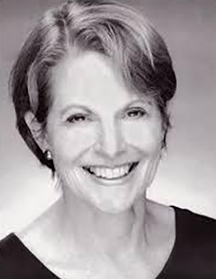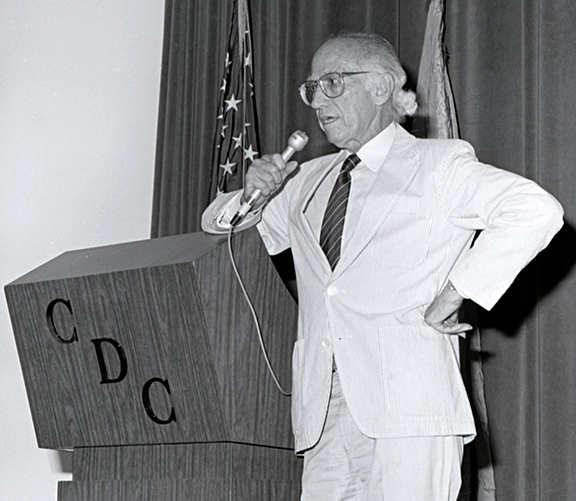
Their colleague Anna Davidson, who recently received her doctorate at UC Davis in the Department of Plant Sciences and is now studying for her master of fine arts degree, organizes the UC Davis LASER events.
She's the person behind the scenes--and in front of the podium--who provides the speakers.
Her next event is from 7 to 9 p.m., Tuesday, Dec. 1 in Room 3001 of the Plant and Environmental Sciences Building. What a program she's lined up! Four speakers who fuse art with science will present 20-minute talks on several disciplines, including medicine, visual art and astrophysics.
The event is free and open to the public.
7 to 7:25 p.m.: Robert Lang, a scientist and artist known as one of the world's foremost origami artists, will speak on “From Flapping Birds to Space Telescopes: The Art and Science of Origami”
7:25 to 7:50 p.m.: Charlotte Jacobs, emeritus professor/physician at Stanford University who currently cares for cancer patients at the Palo Alto Veterans' Medical Center, will speak on "Jonas Salk and the Conquest of Polio.” She wrote a newly published biography on Jonas Salk (Jonas Salk: A Life), which, she says eradicated the crippling disease, but the scientific community never forgave him.
8:10-8:35 p.m.: Rachel Clarke, artist and educator teaching new media art at California State University, Sacramento, will cover “Merging Spaces,” about her latest art work, which combines physical and virtual modes of making
8:35-9 p.m.: Andreas Albrecht, professor and chair of the UC Davis Department of Physics, will discuss “What Is Time?” He is a leading theoretical physicist who specializes in understanding the origins of the universe will be talking about “time.”
More about Jacobs: She is the Ben and A. Jess Shenson Professor of Medicine (emeritus) at Stanford University. A native of Kingsport, Tenn., she studied medicine at Washington University, St. Louis. As a professor at Stanford University, she engaged in teaching, cancer research, and patient care. She received numerous awards for excellence in patient care and teaching, as well as the Distinguished Alumni Award from Washington University.
In his origami talk, Lang says he will discuss the techniques used in mathematical origami design, which range from the abstruse to the highly approachable. “I will describe the geometric concepts led to the solution of a broad class of origami folding problems – specifically, the problem of efficiently folding a shape with an arbitrary number and arrangement of flaps.” Lang holds a doctorate in applied physics from California Institute of Technology (Caltech), and during his work at NASA/Jet Propulsion Laboratory, Spectra Diode Laboratories, and JDS Uniphase, authored or co-authored more than 100 papers and 50 patents in lasers and optoelectronics as well as authoring, co-authoring, or editing 14 books and a CD-ROM on origami.
Clarke, whose topic is new media art, says her work combines physical and virtual modes of making. “As a comment on extreme consumerism in our contemporary lifestyle, the ephemeral works I create are often comprised of the waste products of that lifestyle – banal junk such as food packaging, advertising mailers, plastic bags – as well as discarded digital information. Through physical and digital processes, the discarded materials become contemplative artworks, in the form of experimental animations, augmented reality sculptures, and installations. While I'm using the technologies developed for 21st century capitalism, the way I'm using them becomes a critique of the corporate model of technology – a model designed for consumption of media, not creativity.”
Professor Albrecht says that “Time is a central part of everyday life, yet it can still seem very mysterious.” He will discuss time from a physicist's point of view “in a way that takes us from every day experiences to deep questions about the cosmos.” He is a member of the new Center for Quantum Mathematics and Physics at UC Davis.
In some of the previous UC Davis LASER events, speakers zeroed in on insects. There's an insect connection with the Dec. 1 event, too. Salk is often quoted as saying "If all the insects were to disappear from the Earth, within fifty years all life on Earth would end. If all human beings disappeared from the Earth, within fifty years all forms of life would flourish."
Did Salk say that? Probably not. No more than Albert Einstein said "If the bee disappeared off the surface of the globe, then man would have only four years of life left. No more bees, no more pollination, no more plants, no more animals, no more man.”
Related Links:
For more information on the program, see
https://www.facebook.com/events/1732840033613610/
For directions to the Plant and Environmental Sciences Building, see
http://www.plantsciences.ucdavis.edu/plantsciences/visitors/map.htm
Contact information:
Anna Davidson, adavidson@ucdavis.edu
Attached Images:
